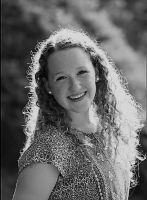Do You See What I See?
When I finally understand something, I say, “Oh, I see.” If you and I disagreed about something, we would say we don’t see eye to eye. And if you have some wonderful realization, we would call it an “insight.” The concepts of sight and understanding are intimately related, and I’ve been discovering this more and more in literature.
In “The Lord of the Rings,” the Great Ring of Power (created by Sauron, whose sinister Eye attempts to see all the world and their intentions) makes the wearer invisible and sharpens his sight in the dark, but makes “the things of this world [seem] thin and vague,” so one character removed the Ring because “he wished to see more clearly.” Gandalf explains Frodo’s lack of pity for Gollum by saying, “You have not seen him.” Lady Galadriel warns Frodo that “Seeing is both good and perilous,” and this peril of sight was never more evident to me than in C.S. Lewis’s novel, “Till We Have Faces.”
Two very close sisters, Orual and Psyche, physically see different things in a valley, and it shatters their relationship. Orual, who cannot see what Psyche claims, describes that upon this recognition of disparity between the two, “with the horror came the inconsolable grief. For the world had broken in pieces and Psyche and I were not in the same piece. Seas, mountains, madness, death itself, could not have removed her from me to such a hopeless distance as this.” Their difference in sight and conviction opens an impossible gulf between them.
Interestingly, Orual says that she was weak compared to the priest’s unshakable certainty in a god he could not see and Psyche’s staunch belief in the vision of the valley that Orual lacked. Indeed, as Hebrews 11:1 tells us, “Faith is…evidence of things not seen.” Their faith gave them strength because evidence regards truth. Orual’s sense of weakness implies that deep down, she knows the truth does not always lie in what is immediately visible.
In conversation with a friend recently, he said he needs to begin prayer by giving thanks because it helps him see more clearly. What does it help him see? Does it help him see the ink on a page or the lines in his skin? Does it clarify the individual leaves on trees? Of course not. It helps him see the stance of his soul and the work and grace of God in his life. It helps him understand.
I continue to ask myself why this connection between sight and understanding is so strong. It seems to naturally permeate our language and expressions of speech, and other consequences of this connection extend far beyond my reach. Nevertheless, I hope this enlightens (what do we need to see? Light? Oh yeah…) your perspective (how do we describe our unique position when we view something? Perspective? Oh yeah…) at least a little. Soon, you won’t be able to escape the allusions to vision. But I don’t think it’s a bad thing to reflect on (What are reflections…? Oh yeah.), and I invite you to ponder it with me.
As in “The Lord of the Rings,” how can certain sight blur our vision of what is true? How does seeing a person make a difference in the way we approach them, and what does it mean to really see someone? As in “Till We Have Faces,” how can different ways of seeing cause ruptures among our family and friends? As in my friend’s prayer, how can we work to see more clearly?




